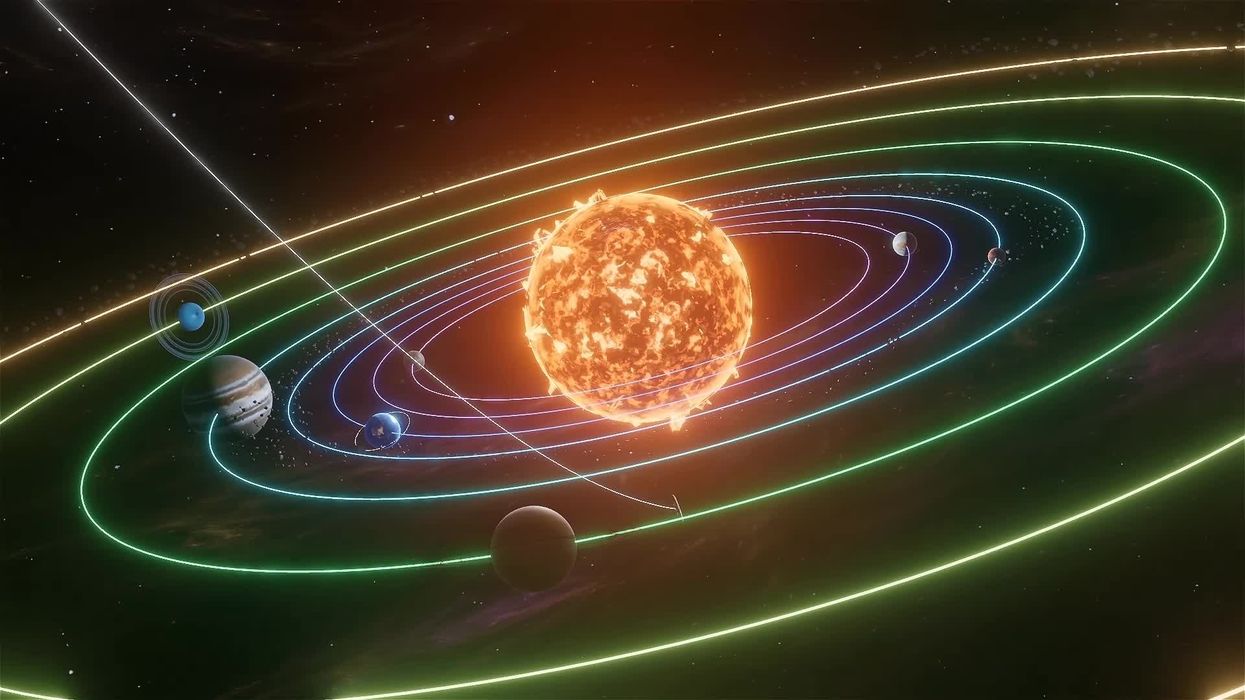Science & Tech
Harriet Brewis
Mar 16, 2023
Pentagon's UFO report 'supports' Oumuamua alien theory
content.jwplatform.com
A senior Pentagon official and one of the world’s most famous astrophysicists have suggested aliens could be sending small probes down to earth.
Sean Kirkpatrick, the director of the Pentagon’s All-Domain Anomaly Resolution Office (AARO) and Abraham (Avi) Loeb, chairman of Harvard University’s astronomy department, published a draft report last week in which they consider how extraterrestrials could be engaged in their own NASA-style exploration missions.
In their paper, titled ‘Physical Constraints on Unidentified Aerial Phenomena’, they write: An artificial interstellar object could potentially be a parent craft that releases many small probes during its close passage to Earth, an operational construct not too dissimilar from NASA missions.
“These ‘dandelion seeds’ could be separated from the parent craft by the tidal gravitational force of the Sun or by a maneuvering capability.”
Sign up for our free Indy100 weekly newsletter
Their conjecture goes on: “With proper design, these tiny probes would reach the Earth or other Solar system planets for exploration, as the parent craft passes by within a fraction of the Earth-Sun separation - just like ‘Oumuamua did.
“Astronomers would not be able to notice the spray of mini-probes because they do not reflect enough sunlight for existing survey telescopes to notice them.”
‘Oumuamua was the first interstellar object to be detected passing through the Solar System when it was spotted by Hawaii’s Pan-STARRS telescope back in 2017.
It drew instant awe and impassioned speculation over what it could be – comet? Asteroid? Alien craft? – owing to its apparent “massive flattened cigar” shape and its gravity-defying ability to speed away.
And whilst respected astronomers have since proposed that the mystery object was in fact just a chunk of icy rock from a Pluto-like world, Loeb has repeatedly promoted the idea that it could be an extraterrestrial vehicle.
In his 2021 book Extraterrestrial: The First Sign of Intelligent Life Beyond Earth, the Harvard professor points out: “‘Oumuamua’s extreme shape, bizarre orbit, and no evidence of outgassing or debris along its path, as well as its luminosity make it “statistically different, by a large margin, from all other objects cataloged by humanity.”

However, Loeb doesn’t believe that all Unidentified Aerial Phenomena (UAP) are alien spacecraft.
Indeed, his and Kirpatrick’s new study, attempts to use physics to rule out a number of UAP sightings that appear to be “highly maneuverable” objects.
For example, the pair argue that if some of the UAP were moving at the seemingly impossible speeds that they appear to be, the friction involved would generate a “bright optical fireball” as well as a tail, which would be visible via radar.
“The lack of all these signatures could imply inaccurate distance measurements,” they suggest.
A preliminary assessment of UAP data collected by the US intelligence community back in 2021 noted that a small number of objects observed by military personnel reportedly demonstrated acceleration or other capabilities that couldn’t easily be explained by established physics.
The report’s authors concluded: “We may require additional scientific knowledge to successfully collect on, analyze and characterize some of [the UAP].”

However, in an interview with The Debrief Loeb said that whilst he accepted that additional analysis may be required to fully understand some UAP, he didn’t condone the idea that experts can rely on saying: “We’re sure there’s a perfectly reasonable explanation for this, we just don’t know what it is yet.”
In other words, some people suggest that some phenomena can’t be explained, not because they come from aliens, but because of flaws within our own systems of understanding.
“Physicists have been struggling for five decades to find evidence of new physics,” Loeb told the site.
“We have to respect the laws of physics as we know them. We can’t just say forget about it, whatever my imagination allows me is possible. That’s not a valid approach.
He concluded: “The burden of proof is on you. You can’t just say it’s new physics because [you] have incomplete data.
“You have to demonstrate that this object is moving in ways that we cannot explain using known physics. And then you might be able to consider new physics.”
Good luck getting your head around all of that.
Have your say in our news democracy. Click the upvote icon at the top of the page to help raise this article through the indy100 rankings.
Top 100
The Conversation (0)














